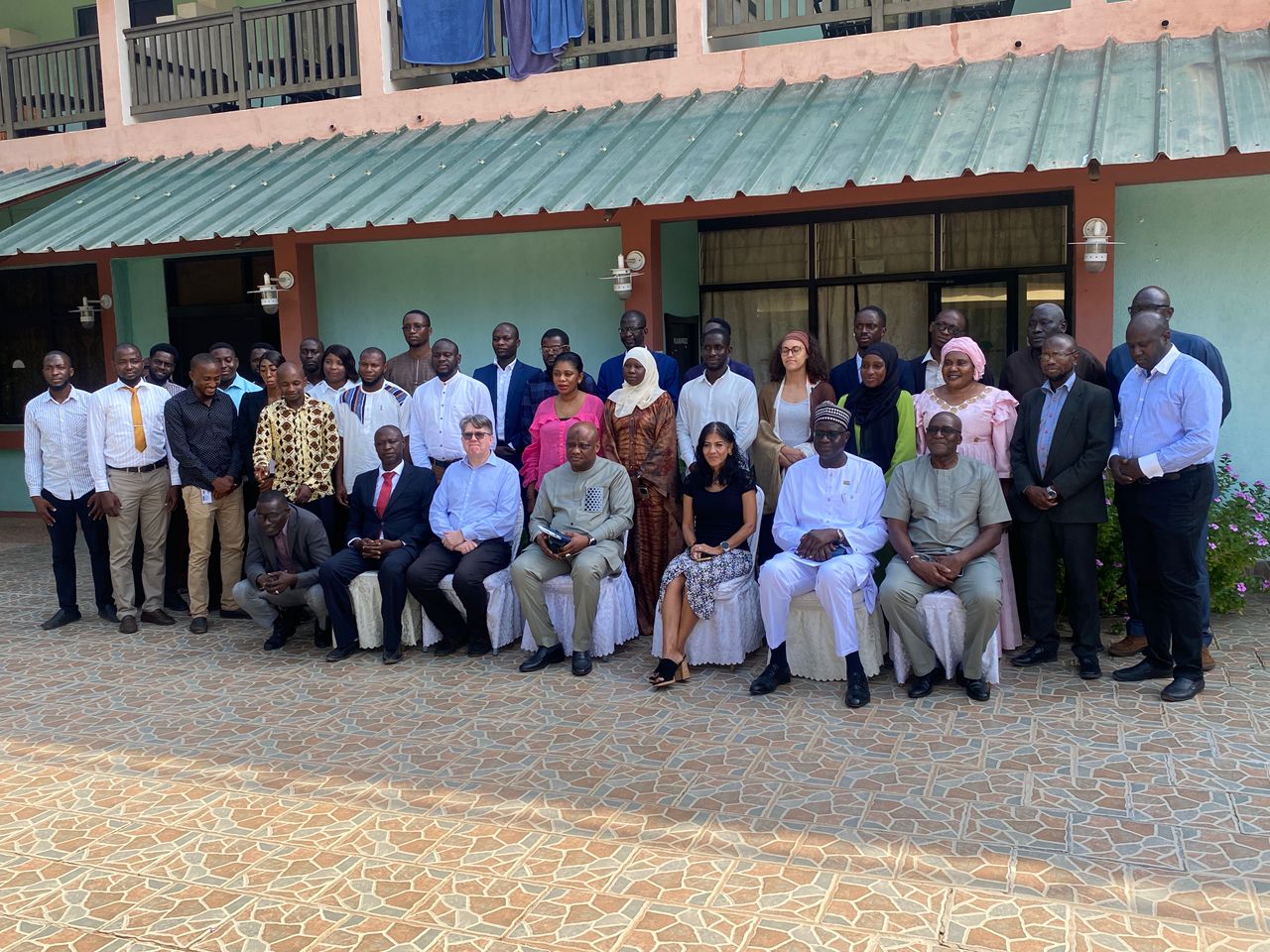 Background
Background
The NETP workshop was held on November 2024, in Banjul, Gambia. Key stakeholders in attendance included the Disaster Management Office, the Public Utilities Regulatory Authority (PURA), the Ministry of Telecommunications and Digital Economy, the Ministry of Finance, the Ministry of Justice, Mobile Network Operators (MNOs), and international organizations such as the World Food Programme (WFP), among others.
Over the course of two days, 51 participants engaged in discussions emphasizing the importance of establishing a robust National Emergency Telecommunications Plan (NETP). They also highlighted the need to update and review existing national policies and laws to integrate emergency telecommunications, implement early warning systems, and develop hazard maps. These measures aim to enhance the country's resilience to disasters, particularly floods and droughts.
The workshop's opening remarks were delivered by
Honorable Mr. Hassa Jallow, Permanent Secretary of the Ministry of Telecommunications and Digital Economy, Dr. Njogou L. Bah, Director General of the Public Utilities Regulatory Authority along with
Ms. Maritza Delgado, Programme Officer, from ITU.
Objectives
The objectives of the workshop were:
-
Present the NETP framework: The main objective of the workshop was to present the first draft of the NETP framework to all national stakeholders from Government and private sector involved in disaster management in the country.
-
Facilitate knowledge exchange: Enable participants to share their insights, pose questions, discuss challenges and gaps, as well as find possible best practices and solutions, define clear implementation strategies that will facilitate the operationalization of the NETP framework.
-
Strengthen national coordination: Define clear roles, responsibilities, and communication channels among stakeholders through the development Standard Operating Procedures (SOPs).
Furthermore, the main goal of the event was to support The Gambia with the development and implementation of the National Emergency Telecommunication Plan framework for the use of Information and Communication Technologies for disaster management and risk reduction, including early warning systems
The event also contributed to the strategic efforts of the ITU to widespread the implementation of early warning systems in line with the EW4All initiative, particularly Pillar 3 on “Warning Dissemination and Communication”.
Key Takeaways
- National emergency telecom planning is a continuous process. It should always focus on being multi-phase, multi-hazard, multi-technology and multi-stakeholder and should always be updated.
- Legal and regulatory frameworks for emergency telecommunications are extremely important as they allow the use of technologies for disaster management. National laws should include vulnerable groups, such as persons with specific needs. These need to be implemented in the Mitigation and Preparedness phases to allow the use of different technologies, including mobile networks to send alerts to end users at risk
- There are many resources to test and refine the NETP and related components. A national ETC cluster should be created and be in charge of this process.
- The NETP is not a standalone plan, it should be integrated into the overall national strategy for disaster management.
- It is important to establish the governance framework of roles and responsibilities that was agreed during the workshop.
- It is important to develop SOPs involving all stakeholders for the implementation process as well as for testing and refining the plans
- The Tampere convention needs to be ratified in the country countries, as it is the only international treaty on the Provision of Telecommunication Resources for Disaster Mitigation and Relief Operations.
- It is essential to implement early warning systems based on a multi-hazard and multi-technology approach to disseminate alerts on time. Early warning systems are important to be implemented and maintained.